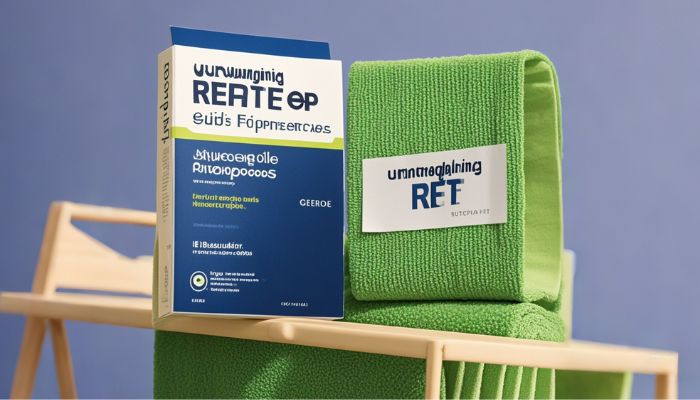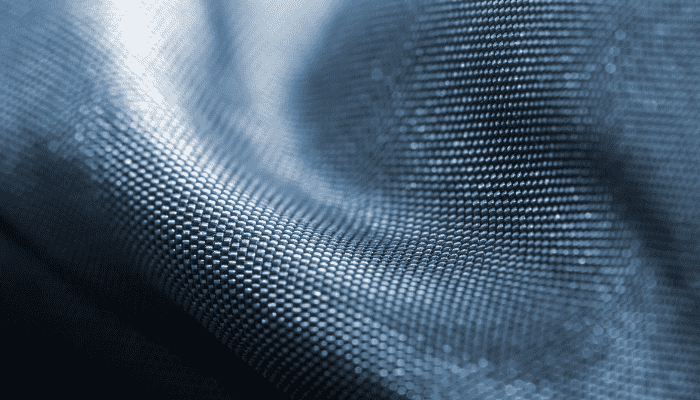In today’s era of pursuing sustainability, industries across the board are actively exploring ways to reduce their environmental impact, and the textile industry is no exception. RPET (Recycled PET) fabric — an innovative material made from recycled plastic bottles and other discarded plastic materials — is gradually becoming a popular choice for eco-conscious consumers. This article will focus on RPET fabric, analyzing its definition, production process, environmental advantages, key characteristics, application scope, identification methods, limitations and challenges, and future development trends, aiming to raise public awareness of this environmentally friendly fabric.
1. Definition of RPET Fabric
RPET, or Recycled PET, is a fabric made from recycled plastic bottles (PET bottles) and other waste plastic materials, which undergo a series of complex recycling processes. The production process involves the collection of used plastics, followed by cleaning to remove impurities and then shredding the materials into smaller pieces. The shredded plastic is then melted at high temperatures and finally transformed into fibers. These fibers can be used to weave various RPET fabric products.
2. Environmental Advantages of RPET Fabric
RPET fabric has several significant environmental advantages. First, it plays a crucial role in waste reduction by repurposing many plastic bottles and other waste materials, effectively alleviating the pressure of plastic pollution on the environment. Secondly, compared to using new petrochemical resources to produce polyester, RPET utilizes recycled plastic as a raw material, greatly reducing the demand for natural resources and actively promoting the protection of the Earth’s limited resources. Additionally, producing RPET fabric typically consumes less energy than producing traditional polyester, thereby reducing carbon emissions and contributing positively to global efforts to combat climate change.
3. Key Characteristics of RPET Fabric
From the perspective of fabric characteristics, RPET fabric performs excellently. It is highly durable and resistant to stretching, making it capable of withstanding various types of wear and tear in everyday use. It is suitable for making a wide range of everyday items, such as sportswear, backpacks, footwear, and more. Although RPET fabric is based on plastic materials, advanced modern technologies allow it to be made very comfortable and soft, fully meeting the comfort requirements for clothing, and it also performs well in breathability, providing comfort to the wearer. Furthermore, RPET fabric is lightweight, making it an ideal material for sportswear and travel accessories, reducing the burden during physical activities or travel.
4. Application Scope of RPET Fabric
RPET fabric is widely used across various fields. In the apparel industry, it is extensively used to produce eco-friendly clothing, activewear, outerwear, and other types of fashion, fulfilling consumers’ dual expectations for style and sustainability. In the home goods sector, products such as carpets, curtains, and bed linens are increasingly made from RPET fabric, adding a touch of green vitality to the home environment. Additionally, in accessories such as backpacks and footwear, many brands have begun using RPET fabric to produce eco-friendly backpacks and shoes, which are loved by many consumers who are concerned about the environment.
5. How Consumers Can Identify RPET Products
For consumers, identifying RPET products is not difficult. Many RPET products are marked with “RPET” or “Recycled Polyester” on their packaging or product descriptions, making it easy for consumers to spot them. Additionally, some products may have received environmental certifications, such as the GRS (Global Recycle Standard) certification, which is a strong proof of the product’s eco-friendly attributes. Furthermore, some brands that focus on sustainability will emphasize that they use RPET fabric, allowing consumers to more accurately select eco-friendly products by searching for these brands.
6. Limitations and Challenges of RPET Fabric
However, RPET fabric is not without its flaws and challenges. Due to the complex and diverse sources of recycled materials, the quality of RPET fabric may vary, which can sometimes affect the texture of the finished product. On a global scale, despite the environmental benefits of RPET, the current plastic recycling rate remains relatively low, which limits the environmental impact that RPET fabric can have. Moreover, since RPET fabric is still based on plastic, it has a long degradation cycle, which presents challenges at the end of its life cycle when it is eventually discarded.
7. Future Development Trends of RPET Fabric
Looking to the future, RPET fabric has a promising development outlook. With continuous advancements in science and technology, the production process of RPET fabric will be constantly optimized, becoming more efficient, and its quality will gradually improve, meeting the demands of a more diverse and high-end market. Additionally, if global plastic recycling systems can be further optimized and improved, the production of RPET fabric is expected to increase significantly, further driving the development of environmental protection efforts and playing an even more important role in the journey toward sustainable development.
8. Conclusion
In conclusion, RPET fabric offers considerable environmental value. By choosing RPET fabric products, consumers are not only acknowledging a new fabric innovation but are also taking tangible steps to promote sustainable consumption and environmental protection. Therefore, it is recommended that consumers incorporate more RPET fabric items into their daily purchases, actively support brands committed to environmental sustainability, and closely follow trends in sustainable development, collectively contributing to the creation of a greener and more beautiful planet.




